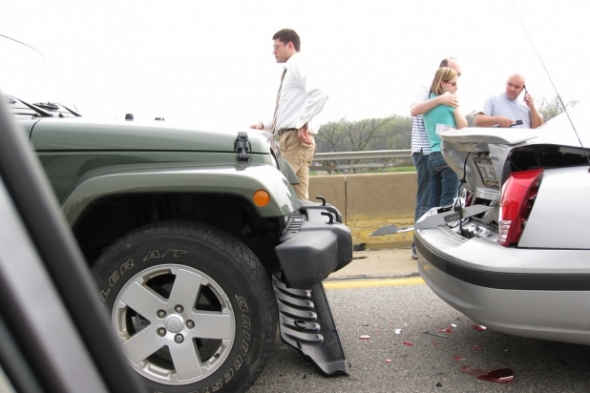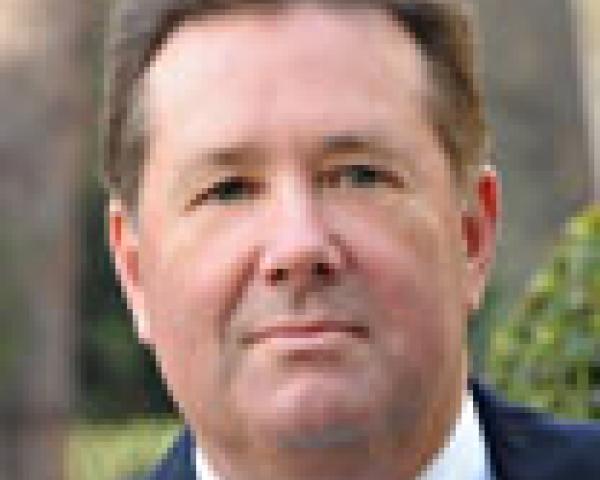This is Part 1 in a two-part series on automobile insurance fraud.
Introduction
Traffic engineers would love to unblock the clogged arteries of Southern California's freeway system, where rush hour is anything but "rush" — more like gridlock. But in a land where one's car is one's empire, one's freedom and personal statement, carpooling is a tough sell. The high-occupancy vehicle (HOV) lanes have scant occupancy. In fact, cars carrying multiple passengers are such a rarity that they, alone, raise red flags for auto insurance claims adjusters.
Operating under the radar is a fast-growing segment of the "underground economy" — organized criminal enterprises that stage automobile collisions to defraud insurance companies of medical payments. In some cases, the entire incident is created on paper, with fictitious vehicles and false identities. In other cases, the perpetrators take real vehicles with legitimate insurance policies out to vacant lots or remote fields to crash them and then fill out a report. The most compelling cases are the ones where participants intentionally ram vehicles together on city streets — often a rear-end collision in a left-turn lane — then dial 911 and wait for police and emergency medical services (EMS) to arrive. This approach triggers a police report and EMS records, which lend an air of legitimacy to the event. It really happened.
Based on instructions from a stager, the driver and two or three passengers — who are known as "stuffed passengers" — report neck and back injuries. The passengers later visit a physician or chiropractor who is in collusion with the criminal ring. The patients sign in and leave without receiving any treatment. If the insurance company balks at paying the specious claim, the claimant enlists the help of an attorney who is also party to the scheme. The attorney is tenacious, willing to go to court, generally able to bluff until the insurance company backs down and settles.
In the process, everybody except the insurance company gets easy money. Property damage to the vehicle is paid to the owner of the vehicle, while multiple players split the proceeds of the settlement for medical payments. In a typical case where the insurance company settles for, say, $6,000, each vehicle occupant might get $1,000, the lawyers and doctors collect their fees and the enterprise leader retains 50% of the professional services fees plus the balance of the claimants' settlement, if any. If the enterprise leader successfully stages dozens of such incidents a month, it's a lucrative business.
This practice exploded in Southern California in the mid-1990s. If you are a special investigations unit investigator, you are dealing with this every day. The average caseload for an adjuster or claims representative might be 150 or 200 a day, depending on the size of the company. At least 25% of that is some flavor of fraud. It's either a false claim or an embellishment to it. People are doing it. Even people who think of themselves as law-abiding are doing it, because they don't think of insurance companies as victims. This type of activity is so prevalent that our undercover investigators would hear paramedics on the scene saying, "Okay, which one of you is going to the hospital this time?"
Automobile insurance fraud is such easy money that the business is even creating unlikely bedfellows. For example, in south central Los Angeles, the Bloods and Crips — gangs that have had an intense and bitter rivalry — are now cooperating with one another in organized insurance fraud, because it's more profitable to join forces.
Six Steps to a Successful Insurance Scam
Constantin Borloff (not his real name), the former leader of a successful and sophisticated fraud enterprise that operated in San Diego, Los Angeles and San Francisco, shares his top tips for making fraud pay. Having paid his debt to society, the ringleader now tells insurance companies how he was able to steal so much money from them, who does it and why it's so easy.
Go for the Med Pay Money
Borloff would insist that vehicle insurance policies have med pay coverage — coverage for reasonable expenses to treat accident-related bodily injury. Because this coverage follows the vehicle, passengers in a vehicle that has med pay coverage will likely be covered, as well. Borloff gave vehicle owners a list of insurance companies that would freely provide these policies.
In theory, claimants are supposed to repay med pay money if they receive a settlement, but that doesn't happen, according to Borloff. "For all history, maybe two times the insurance company asked for money back. If you say you don't have money and can't pay it back, they say, 'Okay, don't pay back the money.'"
Find the Inattentive Insurance Companies
Borloff also selected insurance companies with a reputation for laxity, the ones whose claims representatives didn't take a stand and ask the hard questions. "Big companies like State Farm or Farmers have millions of policies, good special investigation units and more experienced adjusters, so that's where you would see more problems. It's better to go to the smaller company or where it's not their main business. These companies usually pay more, while the big companies usually pay a little less."
Insiders in the business share this information, so they know which companies to avoid and which ones would pay off like loose slot machines in Henderson, NV.
What would make an insurance company an unattractive target? "I don't know what will stop me," Borloff. said "All insurance companies are bound by law to pay. So for us, the system is working perfectly. The insurance company can fight, and they have a lot of resources to fight, but eventually they have to pay something. Maybe more, maybe less, but eventually they have to pay something."
Choose Participants Who Won't Raise Suspicion
In a perfect world, your participants are white American citizens with clean driving records and their own driver's licenses. Judges and juries look most kindly upon this type of claimant, according to Borloff.
It is equally important that their behavior fits accepted patterns. For instance, policies should be active for four to eight months before the staged collision. Claims should be modest, usually no more than $5,000 or $6,000. Activities were choreographed to avoid triggering red flags. "I know insurance companies have about 25 red flags," Borloff says. "What the claims adjusters know, the criminal enterprise knows twice. I knew about all these red flags, and I tried to avoid them."
Distributing the cases is one way to avoid detection, Borloff said. "If the enterprise will do, say, 20 collisions a month, the claims will go to five different insurance companies, each to a different attorney — 10, 15 or 20 different attorneys — and any given adjuster will have at most two cases to a specific attorney. Will the adjuster be suspicious about it? I don't think so. It's very difficult for the insurance company to catch these people in this situation."
Borloff tells of a fringe case where a woman, working against the advice of her stager, staged four accidents in a single week. She submitted claims to four different insurance agencies. All four claims were paid, but this pattern of activity could have exposed everybody in the fraud enterprise to scrutiny and discovery.
Pay More Than Lip Service to the Medical Treatment
When private investigators were first sent to wait outside medical clinics to observe and videotape (the comings and goings of visitors), the first people they caught were the ones who walked in, signed in and left within a minute. People quickly learned to stay longer inside the clinic and have follow-up visits at intervals that would seem appropriate for their injuries and type of care.
Keep Your Stories Straight
Cappers and stagers write notes for people so they can remember their stories when talking to claims representatives and, later on, if they meet with an attorney and go into depositions. Somehow, somewhere, there is a record of all this. If the ring is dealing in volume, there must be good notes, or they won't remember the details of a case, and that's how they get tripped up. Some stagers get tripped up simply by having these notes in their possession — in their offices or briefcases, waiting to be found during a routine traffic stop or search.
Insulate the Players From Each Other
These groups tend to function as classic cell networks. In an effective cell network, the claimant may or may not be exposed to the other people involved, or may be only exposed to the doctor but not to the attorney. That's how these people are protected from one another. Participants may not have a knowledge of what else the group is doing. When we arrested 72 people on a state level and brought them into interrogation rooms for 72 hours, it was pretty clear that they only knew their own activities or those of friends they had brought into the group. They had no knowledge of the bigger scheme. That's how you protect your enterprise.
The parties in these fraud rings learn never to admit to anybody that the accident was staged. Everybody in the enterprise knows it, but if you tell even one person, there's a point of vulnerability. It is especially important to insulate the medical and legal providers, because their professional licenses are critical to facilitate these claims. They take it all the way and never back down.
How often would a criminal enterprise walk away from a case because an insurance company's special investigations unit got involved? "I would not walk away, but I would accept lower settlement, for sure," Borloff said. "One time, one of my colleagues made a terrible mistake and sent 63 cases to Allstate — one attorney, same office. They came to me and said, 'What should we do now, SIU is after us?' I said, 'Don't give up, try to fight,' but they decided to give up. It was the biggest red flag. They lost money. It upset people." Giving up is tantamount to an admission of wrongdoing.
This series of articles is taken from the SAS white paper of the same name. © 2013,
SAS Institute Inc. Used by permission.


